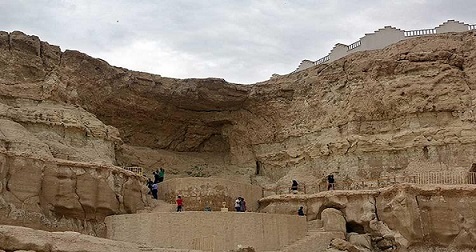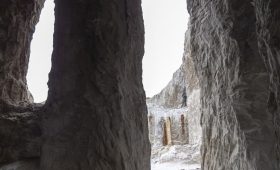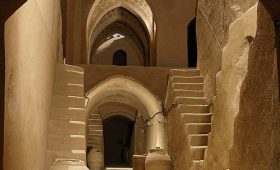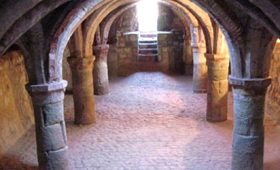Located in the blue waters of the Persian Gulf, Kish Island is one of the most attractive tourist destinations, and traveling to Kish is very popular. The variety of attractions on the island covers a wide range; from recreational to historical attractions. The underground city of Kariz is one of the historical places of Kish Island.
Kariz is the Persian word for aqueduct and in the past it was used to direct underground water. The Kish aqueduct is more than 2,500 years old and supplied the inhabitants of the island with drinkable fresh water. The Kish aqueduct is not comparable to the aqueducts of other parts of Iran in terms of the length of the aqueduct or the depth of the wells; However, due to the very low slope of the island, how to direct the underground water to the surface of the earth is very important in Kish, and it shows that they used the most advanced methods for digging aqueducts in their time.
Today, the Qanat complex has been transformed into an amazing underground city with an area of more than 10,000 square meters, which is considered one of the must-see places in Kish. Of course, it should be noted that Kariz is not a historical underground city; it is actually a network of underground water. The underground city of Kariz includes different parts such as Iranian and world crafts booths, traditional and new restaurants, museums, etc. This city is located 16 meters underground
Considering that the aqueducts usually start from the heights and reach Mazhar, the grandeur of the two-thousand-year-old aqueduct of Kish with a maximum height of forty-five meters is unique in Kish Island. Considering that Kish Island is not very high, the digging and construction of its two-thousand-year-old aqueduct by the hands of creative Iranians in the marl mud layer shows the importance and value of this aqueduct even more. The old aqueduct of Kish with a length of 15 kilometers, along two streams from Safin area and the airport to the current location of the touristic cultural complex of the underground city of Kish, turns into three streams and from this place turns into one stream and flows into the old city of Harire.
Along the route of these old aqueducts, there are many wells for collecting water, which indicates that the water in this aqueduct was static and also flowed and moved in the direction of the aqueduct. The water of this aqueduct was used to irrigate green spaces and drink for the residents, and at the same time, ships used the water of Kish Island for consumption and sale or exchange with other goods in the Persian Gulf countries. Kariz water is the result of the island’s seasonal rains, that passes through the corals as a natural filter and flows in the marl mud layer.
Marl is a type of clay that is soft and flexible in its natural state, and if it is exposed to air, it becomes dry and hard. In the tourist cultural complex of the underground city of Kish (Kariz), walls have been built in front of it to protect this valuable flower. In addition to therapeutic uses for joint pain, marl is used with additional compounds to produce bricks, jars, and cement. The noteworthy point is that these wells were very skillfully dug by the ancient Iranians, whose water was used for irrigation with a gentle slope of 15 kilometers, and it was possible to remove it with something similar to a bucket. Peyabs is a planned place to provide the possibility of removing water from Kariz.
Along the Kariz route, there are 6 footbridges, one of which can be seen in the tourist cultural complex of the underground city of Kish. In the past, the indigenous people of Island used to get their drinking water from this place. These monuments are more than 800 years old. In the distant past, the island of Kish was the trade center of the Persian Gulf and the Sea of Oman, and its drinking water was very valuable for the consumption of the Persian Gulf countries.
The seven-meter-diameter coral ceiling of Kariz Kish was once the seabed and today it is full of shells and aquatic animals that can be seen as fossils. The agents of the underground city of Kariz believe that two features will bring Kariz to the World Heritage List. First, Kariz is located in the heart of the only coral island in the world. Second, it is considered the only building whose roof is full of shells and natural corals; Shells and corals that used to be visited in two ways, visiting natural museums or diving in open water. Now, a new and exceptional season is available for all lovers of open nature who will be able to directly visit the largest coral collection




